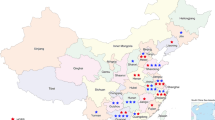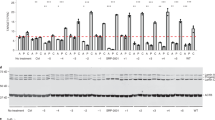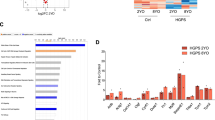Abstract
Premature aging syndromes are rare genetic disorders mimicking clinical and molecular features of aging. A recently identified group of premature aging syndromes is linked to mutation of the LMNA gene encoding lamins A and C, and is associated with nuclear deformation and dysfunction. Hutchinson–Gilford progeria syndrome (HGPS) was the first premature aging syndrome linked to LMNA mutation and its molecular bases have been deeply investigated. It is due to a recurrent de novo mutation leading to aberrant splicing and the production of a truncated and toxic nuclear lamin A precursor (prelamin AΔ50), also called progerin. In this work and based on the literature data, we propose to distinguish two main groups of premature aging laminopathies: (1) HGPS and HGP-like syndromes, which share clinical features due to hampered processing and intranuclear toxic accumulation of prelamin A isoforms; and (2) APS (atypical progeria syndromes), due to dominant or recessive missense mutations affecting lamins A and C. Among HGPS-like patients, several deleted prelamin A transcripts (prelamin AΔ50, AΔ35 and AΔ90) have been described. The purpose of this work was to characterize those transcripts in eight patients affected with HGP-like rare syndromes. When fibroblasts were available, the relationships between the presence and ratios of these transcripts and other parameters were studied, aiming to increase our understanding of genotype–phenotype relationships in HGPS-like patients. Altogether our results evidence that progerin accumulation is the major pathogenetic mechanism responsible for HGP-like syndromes due to mutations near the donor splice site of exon 11.
Similar content being viewed by others
Log in or create a free account to read this content
Gain free access to this article, as well as selected content from this journal and more on nature.com
or
References
Worman HJ, Ostlund C, Wang Y : Diseases of the nuclear envelope. Cold Spring Harb Perspect Biol 2010; 2: a000760.
De Sandre-Giovannoli A, Bernard R, Cau P et al: Lamin a truncation in Hutchinson-Gilford progeria. Science 2003; 300: 2055.
Eriksson M, Brown WT, Gordon LB et al: Recurrent de novo point mutations in lamin A cause Hutchinson-Gilford progeria syndrome. Nature 2003; 423: 293–298.
Delbarre E, Tramier M, Coppey-Moisan M, Gaillard C, Courvalin JC, Buendia B : The truncated prelamin A in Hutchinson-Gilford progeria syndrome alters segregation of A-type and B-type lamin homopolymers. Hum Mol Genet 2006; 15: 1113–1122.
Liu Y, Rusinol A, Sinensky M, Wang Y, Zou Y : DNA damage responses in progeroid syndromes arise from defective maturation of prelamin A. J Cell Sci 2006; 119: 4644–4649.
Shumaker DK, Dechat T, Kohlmaier A et al: Mutant nuclear lamin A leads to progressive alterations of epigenetic control in premature aging. Proc Natl Acad Sci USA 2006; 103: 8703–8708.
Dechat T, Shimi T, Adam SA et al: Alterations in mitosis and cell cycle progression caused by a mutant lamin A known to accelerate human aging. Proc Natl Acad Sci USA 2007; 104: 4955–4960.
Olive M, Harten I, Mitchell R et al: Cardiovascular pathology in Hutchinson-Gilford progeria: correlation with the vascular pathology of aging. Arterioscler Thromb Vasc Biol 2010; 30: 2301–2309.
McClintock D, Gordon LB, Djabali K : Hutchinson-Gilford progeria mutant lamin A primarily targets human vascular cells as detected by an anti-Lamin A G608G antibody. Proc Natl Acad Sci USA 2006; 103: 2154–2159.
Scaffidi P, Misteli T : Lamin A-dependent nuclear defects in human aging. Science 2006; 312: 1059–1063.
Hisama FM, Lessel D, Leistritz D et al: Coronary artery disease in a Werner syndrome-like form of progeria characterized by low levels of progerin, a splice variant of lamin A. Am J Med Genet A 2011; 155A: 3002–3006.
Fukuchi K, Katsuya T, Sugimoto K et al: LMNA mutation in a 45 year old Japanese subject with Hutchinson-Gilford progeria syndrome. J Med Genet 2004; 41: e67.
Shalev SA, De Sandre-Giovannoli A, Shani AA, Levy N : An association of Hutchinson-Gilford progeria and malignancy. Am J Med Genet A 2007; 143A: 1821–1826.
Moulson CL, Fong LG, Gardner JM et al: Increased progerin expression associated with unusual LMNA mutations causes severe progeroid syndromes. Hum Mutat 2007; 28: 882–889.
Navarro CL, De Sandre-Giovannoli A, Bernard R et al: Lamin A and ZMPSTE24 (FACE-1) defects cause nuclear disorganization and identify restrictive dermopathy as a lethal neonatal laminopathy. Hum Mol Genet 2004; 13: 2493–2503.
Reunert J, Wentzell R, Walter M et al: Neonatal progeria: increased ratio of progerin to lamin A leads to progeria of the newborn. Eur J Hum Genet 2012; 20: 933–937.
Rodriguez S, Coppede F, Sagelius H, Eriksson M : Increased expression of the Hutchinson-Gilford progeria syndrome truncated lamin A transcript during cell aging. Eur J Hum Genet 2009; 17: 928–937.
Larionov A, Krause A, Miller W : A standard curve based method for relative real time PCR data processing. BMC Bioinform 2005; 6: 62.
Dalgleish R, Flicek P, Cunningham F et al: Locus Reference Genomic sequences: an improved basis for describing human DNA variants. Genome Med 2010; 2: 24.
Rodriguez S, Eriksson M : Low and high expressing alleles of the LMNA gene: implications for laminopathy disease development. PLoS One 2011; 6: e25472.
Goldman RD, Shumaker DK, Erdos MR et al: Accumulation of mutant lamin A causes progressive changes in nuclear architecture in Hutchinson-Gilford progeria syndrome. Proc Natl Acad Sci USA 2004; 101: 8963–8968.
Navarro CL, Cadinanos J, De Sandre-Giovannoli A et al: Loss of ZMPSTE24 (FACE-1) causes autosomal recessive restrictive dermopathy and accumulation of Lamin A precursors. Hum Mol Genet 2005; 14: 1503–1513.
Varela I, Pereira S, Ugalde AP et al: Combined treatment with statins and aminobisphosphonates extends longevity in a mouse model of human premature aging. Nat Med 2008; 14: 767–772.
Mesa JL, Loos RJ, Franks PW et al: Lamin A/C polymorphisms, type 2 diabetes, and the metabolic syndrome: case-control and quantitative trait studies. Diabetes 2007; 56: 884–889.
Wegner L, Andersen G, Sparso T et al: Common variation in LMNA increases susceptibility to type 2 diabetes and associates with elevated fasting glycemia and estimates of body fat and height in the general population: studies of 7,495 Danish whites. Diabetes 2007; 56: 694–698.
Wegner L, Anthonsen S, Bork-Jensen J et al: LMNA rs4641 and the muscle lamin A and C isoforms in twins—metabolic implications and transcriptional regulation. J Clin Endocrinol Metab 2010; 95: 3884–3892.
Duesing K, Charpentier G, Marre M et al: Evaluating the association of common LMNA variants with type 2 diabetes and quantitative metabolic phenotypes in French Europids. Diabetologia 2008; 51: 76–81.
Fontaine-Bisson B, Alessi MC, Saut N et al: Polymorphisms of the lamina maturation pathway and their association with the metabolic syndrome: the DESIR prospective study. J Mol Med (Berl) 2010; 88: 193–201.
Owen KR, Groves CJ, Hanson RL et al: Common variation in the LMNA gene (encoding lamin A/C) and type 2 diabetes: association analyses in 9,518 subjects. Diabetes 2007; 56: 879–883.
Osorio FG, Navarro CL, Cadiñanos J et al: Splicing-directed therapy in a new mouse model of human accelerated aging. Sci Transl Med 2011; 3: 106ra107.
Acknowledgements
We acknowledge Danielle Depetris for her excellent technical assistance and Xavier Nissan (iSTEM, Paris) for kindly providing us with the real-time RT-PCR probe used to detect dermopathin. This work was supported by the Association Française contre les Myopathies (AFM), Institut National de la Santé et de la Recherche Médicale (INSERM) and a grant from NIH/NIA R24AG042328 (JO). FB and RF have received PhD fellowship grants from the Fondation pour la Recherche Médicale and INSERM regional fellowship, respectively.
Author information
Authors and Affiliations
Corresponding author
Ethics declarations
Competing interests
The authors declare no conflict of interest.
Additional information
Supplementary Information accompanies this paper on European Journal of Human Genetics website
Rights and permissions
About this article
Cite this article
Barthélémy, F., Navarro, C., Fayek, R. et al. Truncated prelamin A expression in HGPS-like patients: a transcriptional study. Eur J Hum Genet 23, 1051–1061 (2015). https://doi.org/10.1038/ejhg.2014.239
Received:
Revised:
Accepted:
Published:
Issue date:
DOI: https://doi.org/10.1038/ejhg.2014.239
This article is cited by
-
Pharmacotherapy to gene editing: potential therapeutic approaches for Hutchinson–Gilford progeria syndrome
GeroScience (2020)
-
p53 induces senescence through Lamin A/C stabilization-mediated nuclear deformation
Cell Death & Disease (2019)
-
Outcomes of 4 years of molecular genetic diagnosis on a panel of genes involved in premature aging syndromes, including laminopathies and related disorders
Orphanet Journal of Rare Diseases (2019)
-
Recent advances in animal and human pluripotent stem cell modeling of cardiac laminopathy
Stem Cell Research & Therapy (2016)



